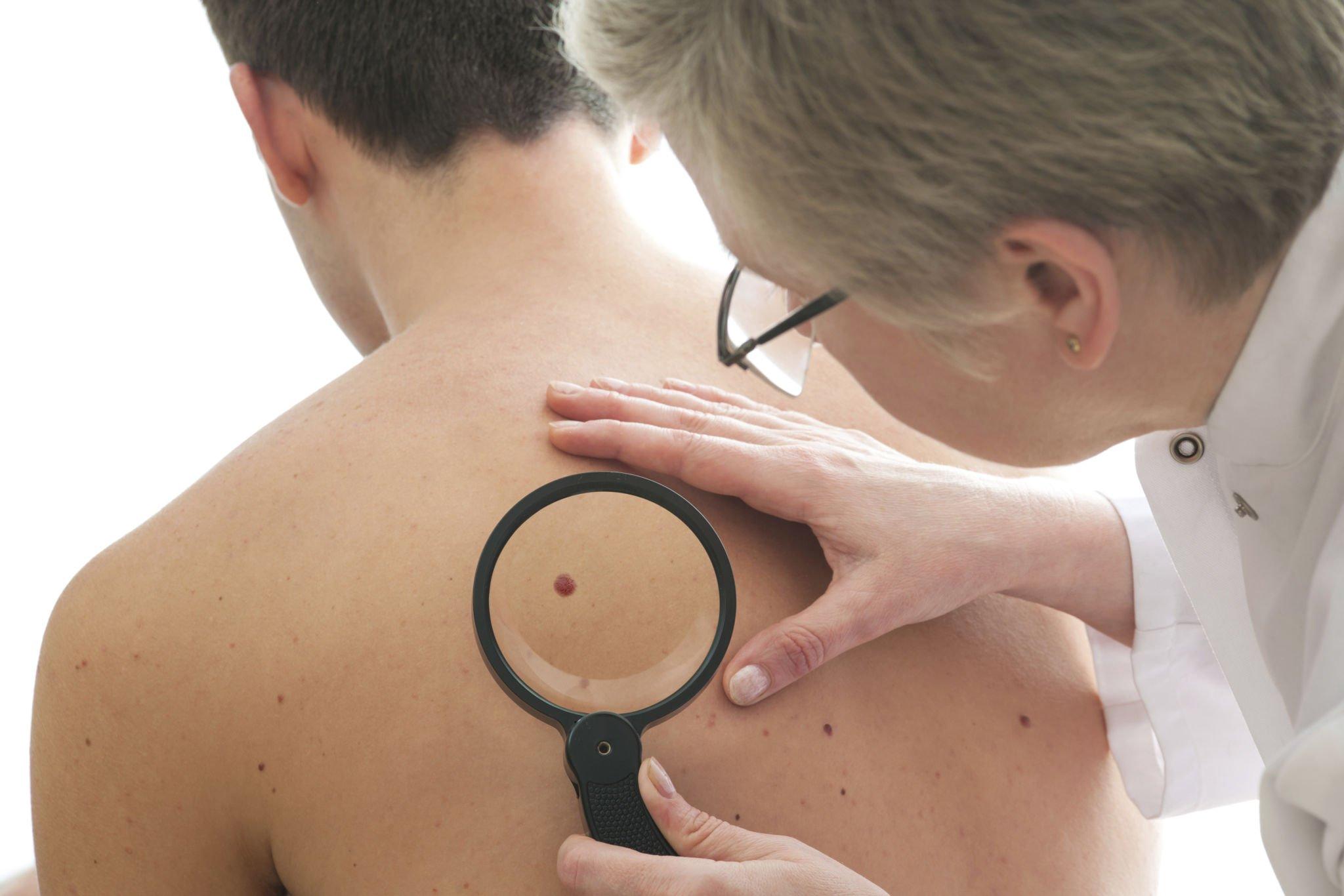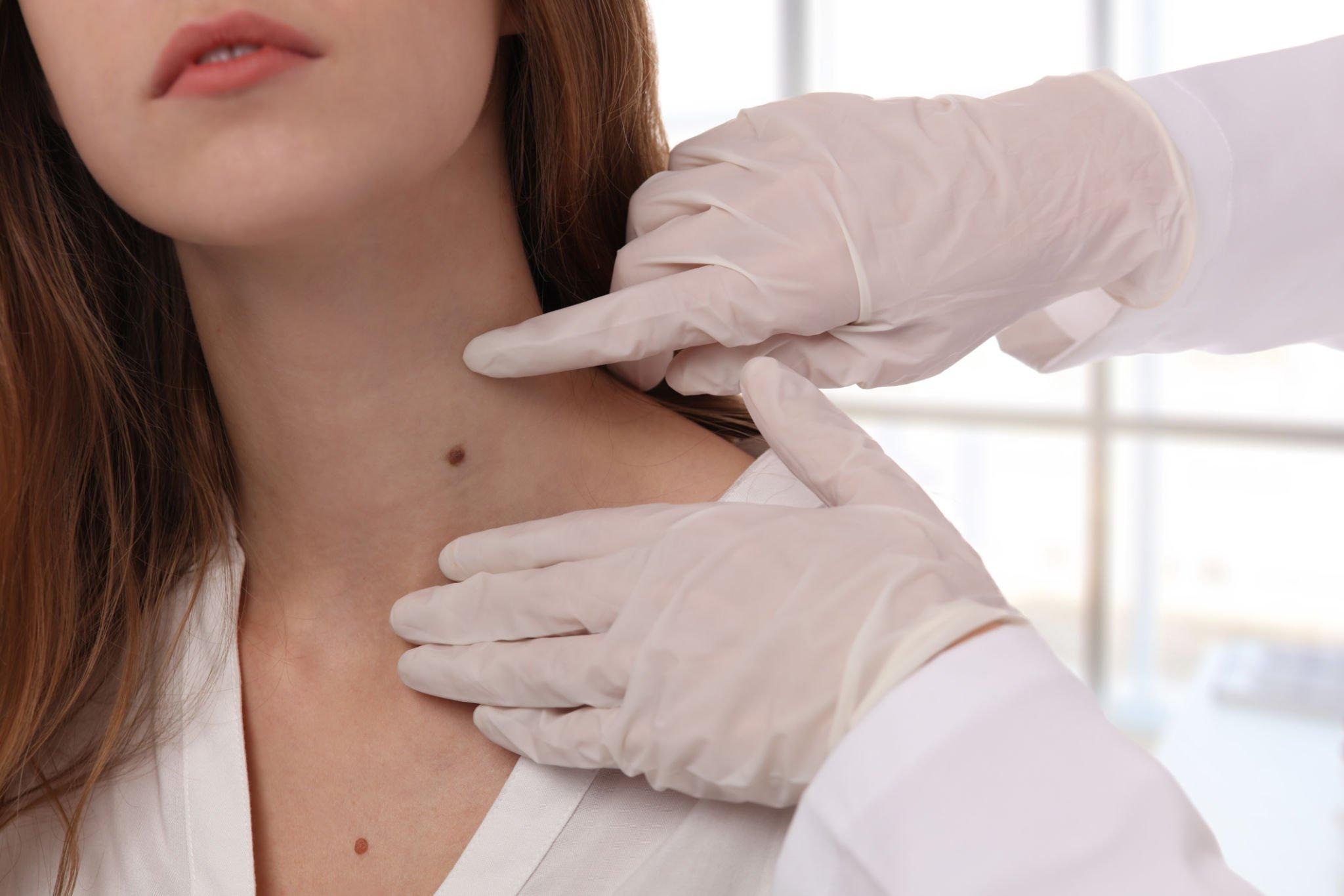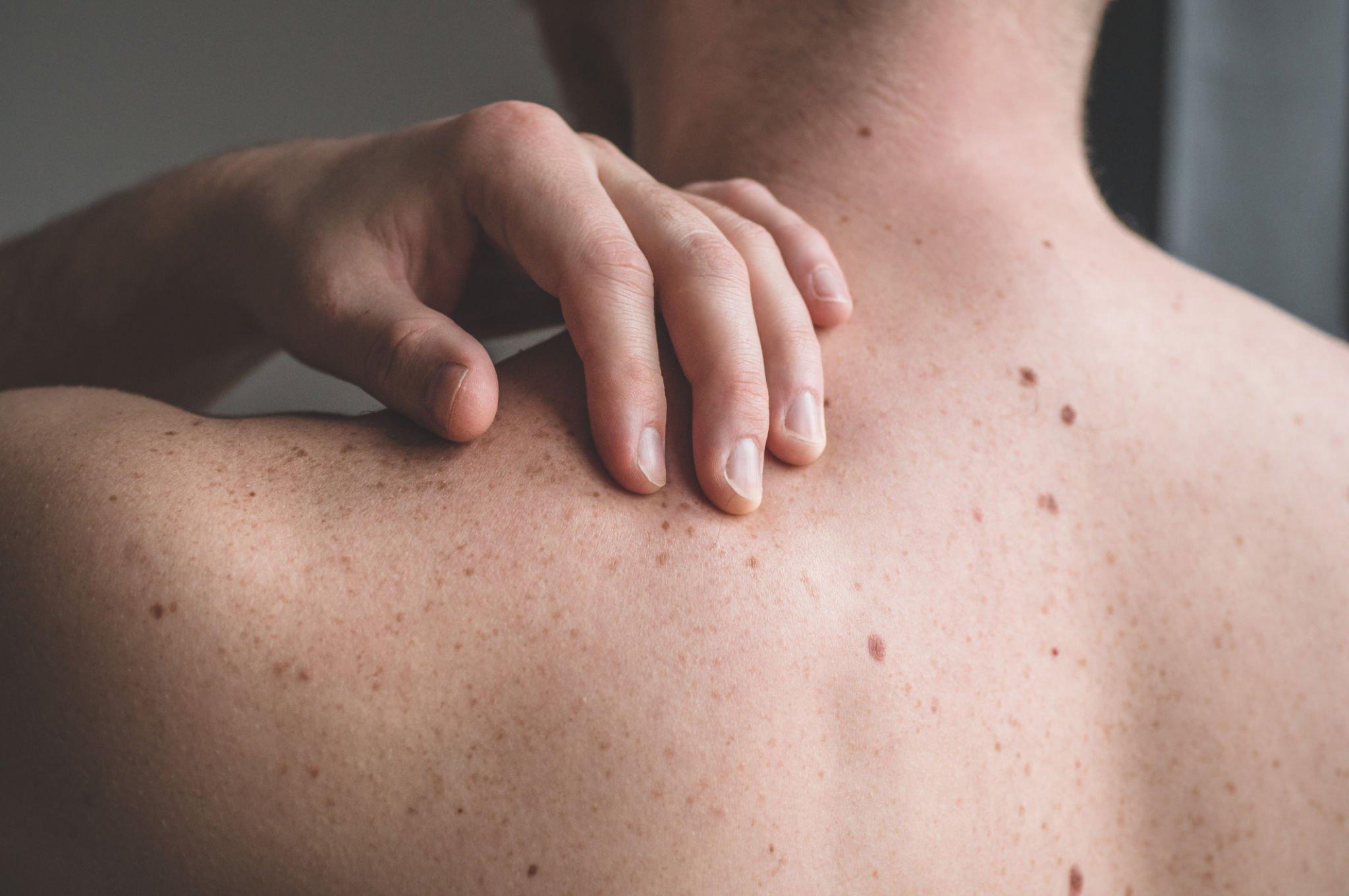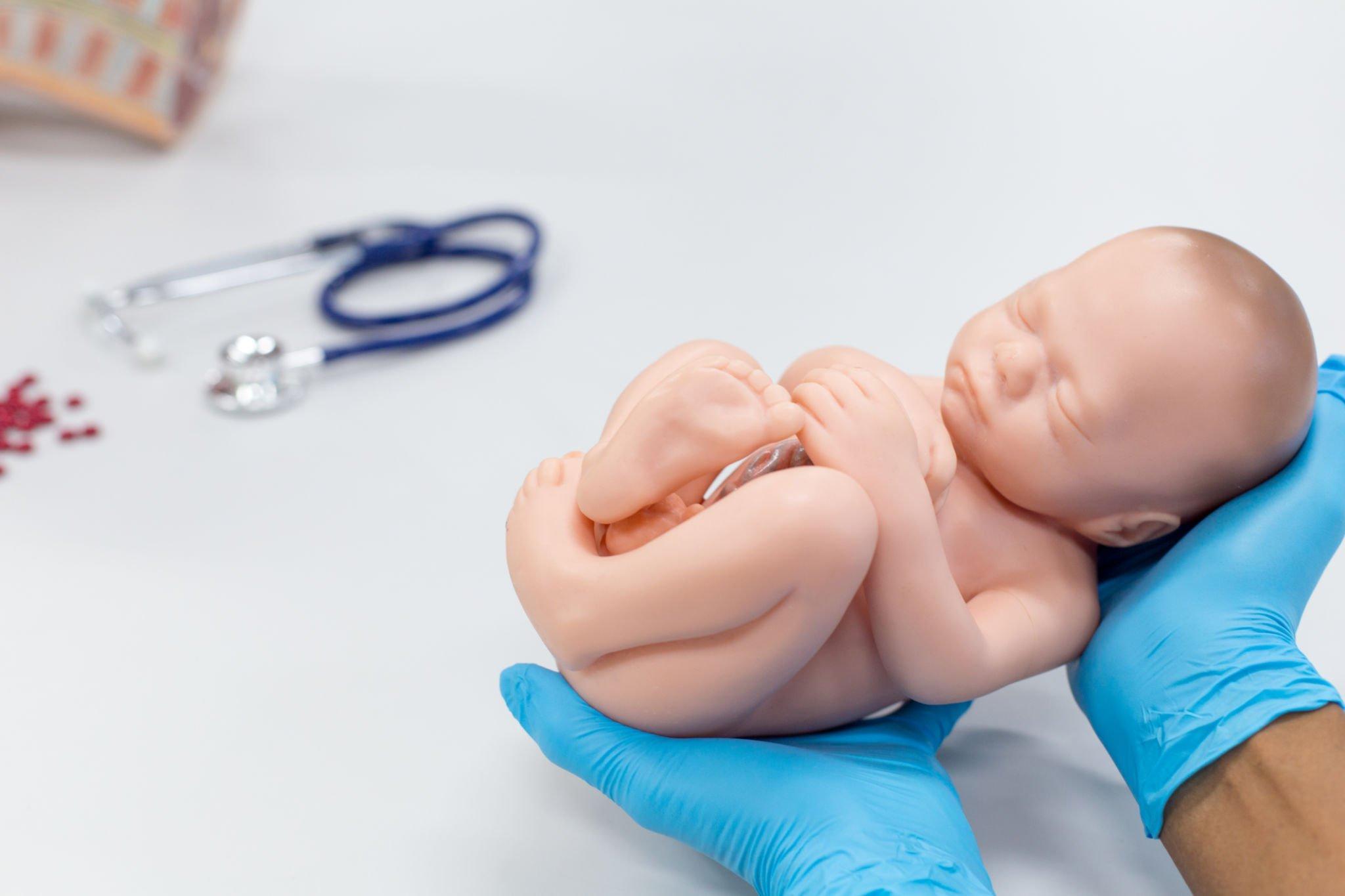You must have seen moles in your skin, which are small, coloured spots. Moles are quite common, usually considered harmless, skin growth that can develop because of pigment-producing cells or the overgrowth of melanocytes.
However, if you observe sudden changes in the colour, size, and shape, of moles then it can indicate certain serious skin conditions. Typically, moles can form during childhood and adolescence, but new moles can also appear in adulthood.
Most moles are considered to be noncancerous, or benign, however, the sudden development of a certain new mole or changes to your existing moles can be an indication of melanoma.
Melanoma is a certain type of skin cancer. As per the American Society of Cancer, melanoma is just one per cent of all other skin cancers. Therefore, you must check your moles if you notice any change in colour. It has the potential to cause other major skin cancer deaths.

What are the different types of skin moles?
1. Common mole
This is considered to be a normal mole, which is a small growth that can be seen on your skin that is pink, brown, or tan and has got a distinct edge.
2. Congenital mole
These kinds of moles are discovered on your skin during the time you were born. Such Congenital nevi may occur in one per cent of people.
Such moles are more likely to develop into melanoma rather than moles that generally appear after birth. If you notice that your skin mole is greater than 8 mm. in diameter, then it has the potential to become cancerous.
3. Dysplastic mole
Such moles are bigger than a pencil eraser having an irregular shape. Dysplastic mole will mainly have uneven edges and colour with dark brown centres having lighter.
These moles may also be hereditary, and those who have such moles may have more than a hundred moles. If you have got dysplastic mole then you are far more prone to develop malignant (cancerous) melanoma.
Therefore, any changes in your mole must be checked critically for skin cancer by a certain dermatologist.
What may cause a new mole to appear?
When melanocytes, the pigment-producing cells in a person’s skin, multiply, or duplicate, they can produce a specific new mole, which looks like the typical moles that people see on the surface. Melanocytes may contain a pigment that offers moles their distinctive colouring.
Moles can be both benign and cancerous. These cancerous moles may develop because of genetic mutations. The precise reason for benign moles still remains unknown.

The following are a few possible causes of any new mole:
- Exposure to UV radiation
- Genetics
- Having fair skin
- Having a very weakened immune system.
Read also: E-Learning Outcomes for Bariatric Surgery Course – A Comprehensive Overview
How can you prevent cancerous moles?
UV light available from the sun can often enhance the possibility of a mole to turn into cancerous.
So, if your skin has lots of moles, then you must be very careful in the sun.
It is very essential to regularly check your moles for any changes. The following are a few things that you can do for protecting your moles from sun damage, particularly during hot weather.
Do:
- Try to stay in the shade during noon particularly between 11 am and 3 pm, as during this time sunlight is strongest
- Try to cover your skin with clothes. Prefer to wear a hat and also sunglasses in case you have got moles on your face
- Regularly apply a certain high-factor sunscreen and try to apply it again after taking a bath or swimming.
Don’t:
- Never use sunlamps or sunbeds because they use UV light.
Few signs to watch
A few warning signs that you need to look for in your existing mole include:
- Changes in colour, size or shape
- Pain
- Bleeding
- The mole diameter is bigger than 6mm.
A few other symptoms are:
- White halo around the mole edge
- Discomfort from the mole
- Certain moles may look very different from other moles.

Conclusion
Moles are considered skin growths that are made of melanocytes. Most of our moles develop during childhood and adolescence. Also, adults can develop new moles.
All moles that may appear in adulthood may not be melanomas. However, if you observe any new moles, or if you notice any changes to your existing moles, then visit a doctor/dermatologist for checks.


